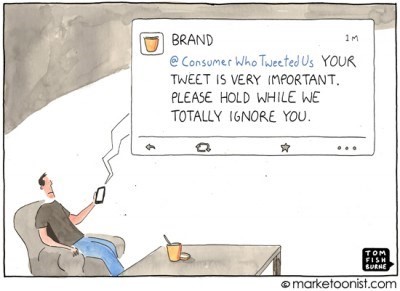Overcoming the hurdles of social media compliance
24 September 2013

When it comes to social media, banks seem to be in a no-win situation. They get slated when they’re not doing it, and criticised when they try to do it but can’t do it well enough because of compliance issues.
As this article on Marketing Magazine reports, HSBC has made a bold but true statement that banks are “years behind” with social media…in some cases, as far behind as 2009. The article identifies compliance as a main constraint of social media success within the banking industry, which isn’t really a new revelation. But the days of banks using compliance as an excuse for not being social cannot go on forever. Customers are finally talking to/about their banks on social media – I myself took to Twitter when my banks' internet banking was down the other week. Ignoring these interactions could be mistaken as ignoring the customer. And in an age where it’s now easier than ever for customers to switch banks, this could be banking suicide.
So how can banks overcome the hurdles of compliance?
The article highlights one example where HSBC created a list of 50 social messages which had been pre-approved by the compliance team. A nice start, but what happens when a customer asks a question and no response fits? Should they ignore the customer? (Please, no!) Should they tweet a pre-approved response anyway, and risk being perceived as automated? This happened to Bank of America, and it wasn’t pretty. Or, should they draft a reply, have the compliance team approve it, and then respond to the customer? Probably the best option, although in this case the poor customer was left in the lurch for three hours while HSBC went through this process.
A three hour customer service response time is not acceptable on social media – although it’s a definite improvement on the average response time of 5 hours. The reason customers turn to social media over alternative methods such as email or telephone is because they believe the public nature of social media will get them a quicker response. Obviously this isn’t always the case, and taking 3-5 hours to respond is only going to give the customer 3-5 hours to become even angrier – who knows, they might even buy a promoted tweet to complain about your customer service.
A great example of social customer service from a bank, which I’ve referenced a few times in previous posts, is Citi. @AskCiti is Citi’s Twitter channel dedicated purely to customer services. When customers tweet the account, Citi’s team responds by asking the customer to send a Direct Message detailing their account type, phone number and a convenient time to call. Taking the online experience offline helps keep the interaction compliant; ensuring no sensitive information is given out on social media. Although there may still be a lengthy response time in comparison to other social media interactions, the customer is aware that the team are willing to help. The only barrier is that sending Direct Messages requires users to follow each other, and I expect many brands aren’t actually aware of this. However, having the bank follow the customer and vice versa, gives the foundations of a great relationships – by being followed by their bank, the customer might feel valued.
What this boils down to is the importance of different teams working together when it comes to social media - and this doesn't just apply to banking. In this case, the social media and customer service teams should understand at least the basics of compliance. And the compliance team should recognise the importance of social media and giving quick responses. Just because the responsibility of social media sits within one team doesn't mean other teams aren't needed for support. The success of any social media strategy relies on the whole business knowing what's going on, and getting involved when required.

